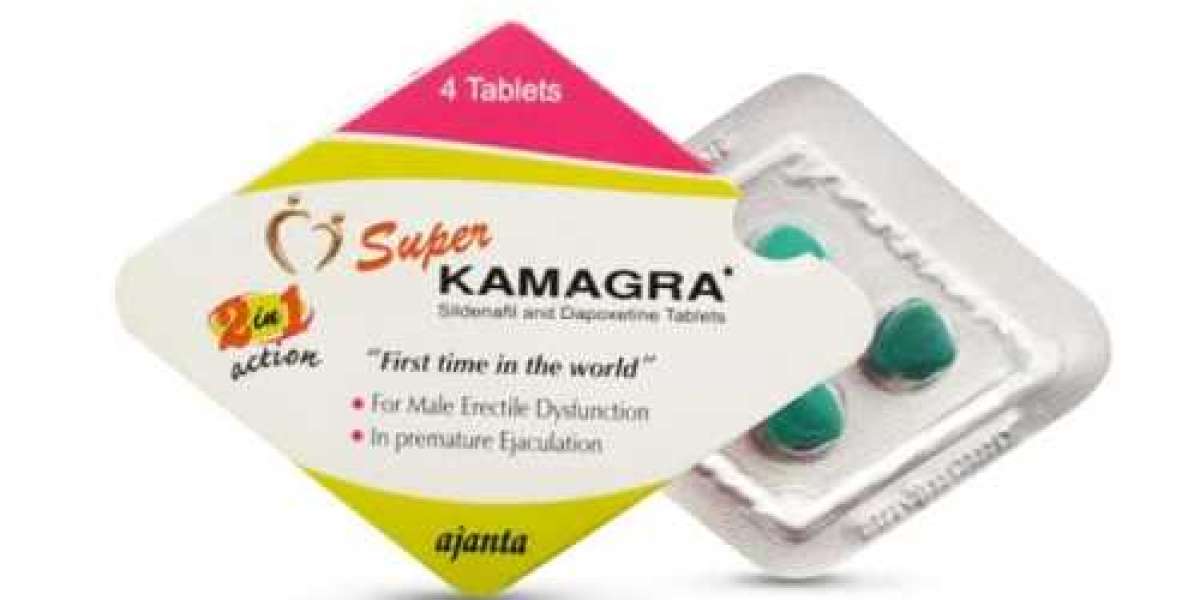Story at-a-glance
- At present, 23,000 Americans die each year from drug-resistant infections; estimates suggest that by 2050 the global death toll from antibiotic-resistant disease will reach 10 million per year
- One significant driver of antibiotic-resistant bacteria is the routine use of antibiotics in agriculture. Another major contributor to and source of drug-resistant infections is hospitals
- One particularly troublesome multidrug-resistant bacteria that is gaining ground is carbapenem-resistant enterobacteriaceae (CRE), which produces an enzyme that breaks down antibiotics
- Tests conducted on nearly 5,780 antibiotic-resistant bacterial samples collected from hospitals and nursing homes found 1 in 4 contained genes known to confer drug resistance, and 221 contained a particularly rare drug-resistance gene that confers a very high level of resistance
- The 221 samples came from 27 different states, which shows this new drug-resistance gene has already spread far and wide. The gene was found in samples of pneumonia, bloodstream infections and urinary tract infections
By Dr. Mercola
According to the largest review of the drug resistance problem to date, by 2050 the annual global death toll from antibiotic-resistant disease will reach 10 million.1 At present, an estimated 23,000 Americans die each year from drug-resistant infections, and the death toll will continue to rise until or unless the underlying causes are properly addressed. One significant driver of antibiotic-resistant bacteria is the routine use of antibiotics in agriculture.2
As noted by the Institute for Agriculture and Trade Policy in 2016,3 "The rapid spread of new disease strains ... is one very visible reason why the expansion of factory-style animal production is viewed as unsustainable." In the video above, the late Steve Wing, former associate professor and epidemiologist at the University of North Carolina at Chapel Hill, discusses the human health impacts of factory farms.
Another major contributor to and source of drug-resistant infections is hospitals. According to statistics by the Centers for Disease Control and Prevention (CDC), 1 in 25 patients now contracts a hospital-acquired infection4 and many of them are resistant to drug treatment. Most disturbing of all, some infections are now exhibiting "panresistance," meaning they're resistant to every antibiotic in existence.
One particularly nasty panresistant bacterium that is gaining ground is carbapenem-resistant enterobacteriaceae (CRE), which produces an enzyme that breaks down antibiotics. Hospitals are the most common source of this infection, which is lethal in about 9 percent of all cases. When the CRE infection affects the blood, the death rate jumps to 50 percent.5
CRE With Rare New Resistance-Conferring Genes Found in 27 States
Tests conducted last year on nearly 5,780 antibiotic-resistant bacterial samples collected from hospitals and nursing homes revealed 1 in 4 samples contained genes known to confer drug resistance, and 221 contained a particularly rare drug-resistance gene that confers a very high level of resistance.6,7 Principal deputy director of the CDC, Dr. Anne Schuchat, told CNN she was "surprised by the numbers found."8
The 221 samples came from 27 different states, which shows this particularly troublesome drug-resistance gene has already spread far and wide. It was also found in a number of different types of infections, including samples of pneumonia, bloodstream infections and urinary tract infections.
Disturbingly, follow-up screening showed nearly 1 in 10 asymptomatic contacts tested positive for drug-resistant bacteria carrying this rare gene, which means it can, and likely has, spread to other patients who have come into contact with an infected individual.
To get ahead of the antibiotic-resistance problem, the CDC has created a strategy to identify, track and contain the germs and, according to the CDC, it seems to be working. CRE prevalence has declined slightly in recent years, but the emergence and rapid spread of this new drug resistance gene is still deeply troubling. According to Schuchat, "these verge on untreatable infections," where supportive care is the only option.9
With intravenous (IV) fluids, you may be lucky enough to recover as long as your immune system is strong enough. Still, what in the past might have been an easily treatable condition can now become truly life-threatening.
As noted in the CDC's report,10 "Notably, 221 isolates with non-KPC [Klebsiella pneumoniae] carbapenemases were identified; these rare forms of resistance have the potential to add to the U.S. CRE burden and represent an important opportunity to prevent the spread of novel resistance at its earliest stage. Findings from these enhanced prevention efforts are being used to further refine detection and prevention strategies."
Using Lactated Ringer's Solution Rather Than Saline Can Save Lives
An important side note on the use of IV fluids is to make sure you or your loved one receives lactated Ringer's solution rather than saline. Two recent studies show IV saline can cause major kidney problems and death — risks that could easily be lowered by using lactated Ringer's solution, a "balanced crystalloid" electrolyte replenishment11 that has been widely available for many decades, and costs about the same as saline.
While saline consists of sodium chloride dissolved in water, lactated Ringer's12 solution contains a mix of electrolytes, including sodium chloride, sodium lactate, calcium chloride and potassium chloride, which makes it more similar to blood plasma. The first study,13 which evaluated outcomes in over 15,800 intensive care unit (ICU) patients, found those receiving IV saline suffered higher rates of kidney problems and mortality within 30 days than those receiving lactated Ringer's solution:
- 15.4 percent of those receiving saline had a major adverse kidney event, compared to 14.3 percent of those receiving lactated Ringer's
- 2.9 percent of those receiving saline required kidney-replacement therapy, compared to 2.5 percent of those receiving lactated Ringer's
- 11.1 percent of the saline group died within 30 days, compared to 10.3 percent in the lactated Ringer's group
The second study14 involved adults with noncritical illness who were treated in the emergency room (ER) and subsequently hospitalized outside an ICU. The primary outcome of this one was hospital-free days after discharge. Secondary outcomes included kidney problems, renal-replacement therapy, persistent renal dysfunction and death from any cause within 30 days. Of the nearly 13,350 patients enrolled, 88.3 percent received lactated Ringer's exclusively in the ER.
Here, the number of hospital-free days were identical in both the saline and lactated Ringer's groups (with a median of 25 days respectively), but those receiving lactated Ringer's had a lower rate of adverse kidney events — 4.7 percent versus 5.6 percent. Overall, these two studies suggest lactated Ringer's solution is particularly important for critically ill patients, but will also lower the odds of adverse kidney events in those who are not critically ill.
While the overall difference in adverse events and death between the two solutions is only about 1 percent, this difference still translates into anywhere from 50,000 to 70,000 fewer deaths and 100,000 fewer cases of kidney failure in the U.S. alone when you consider the tens of millions receiving IV saline each year. So, whenever you're in the hospital for any significant length of time and need to receive IV fluids, it is imperative to be sure to ask for lactated Ringer's solution.
Drugs Other Than Antibiotics Are Also Changing the Human Microbiome
In related news, scientists warn that antibiotics are not the only type of drug capable of altering the human microbiome and posing a significant health threat. According to researchers at the European Molecular Biology Laboratory in Germany, antidiabetic drugs, proton pump inhibitors, nonsteroidal anti-inflammatory drugs and atypical antipsychotics are all capable of upsetting the composition of your microbiome.15
Of the 1,000 nonantibiotic drugs tested in vitro, one-quarter of them were found to inhibit the growth of at least one species of human gut bacteria. Forty of the drugs impacted 10 or more species. As predicted, 78 percent of antibacterial drugs tested inhibited one or more species of gut bacteria, but the fact that so many drugs designed to target human cells, not microbes, were also found to affect the microbiome took them by surprise. Senior author professor Peer Bork commented on the findings, saying:16
"The number of unrelated drugs that hit gut microbes as collateral damage was surprising. Especially since we show that the actual number is likely to be even higher. More human-targeted drugs would inhibit bacterial growth if probed at higher doses, closer to physiological concentrations. [And] analysis indicates that if more gut species were tested, the fraction of human-targeted drugs with anti-commensal activity would increase."
Another surprise: The team also found that the microbes' resistance mechanisms to human-targeted drugs had a "large degree of overlap" with those of antibiotics. What this means is that even nonantibiotic drugs may promote antibiotic resistance. As noted by the authors, "The potential risk of nonantibiotics promoting antibiotic resistance warrants further exploration.
Our results provide a resource for future research on drug–microbiome interactions, opening new paths for side effect control and drug repurposing and broadening our view of antibiotic resistance."
Both Antibiotics and Antacids Raise Risk of Allergies in Infants
A study17,18,19 that appears to support these findings was recently published in JAMA Pediatrics. Here, they found that use of either antibiotics or antacids during infancy increased the risk of childhood allergies, including asthma, to an equal degree. For this study, the Tricare health records of nearly 800,000 children born between 2001 and 2013 were reviewed. The follow-up period averaged 4.5 years, at which point more than half of the children had developed some form of allergy.
While the root cause remains uncertain, there appears to be a strong relationship between allergy development and the use of antibiotics and antacids. Babies who received antacids such as proton pump inhibitors (PPIs) or histamine-2 receptor antagonists (H2 blockers) at some point during their first six months of life had twice the risk of developing a food allergy, especially for cow's milk, and a 50 percent higher risk of hay fever and anaphylaxis, a severe allergic reaction.
Babies given antibiotics during the first six months of life had more than twice the risk of asthma, a 14 percent increased risk for food allergy, as well as a 50 percent higher risk of anaphylaxis and hay fever. According to the researchers, the common link between antacids and antibiotics is their impact on intestinal bacteria.
By altering the balance of gut bacteria, it can cause the child's immune system to overreact, triggering an allergy. The scientists also noted there's evidence to suggest antacids affect the digestion of proteins, and may alter the development of a child's immune system pathways.20 Senior author and pediatric gastroenterologist at Uniformed Services University, Dr. Cade Nylund, told The New York Times:21
"Let's not prescribe these medicines for things that are very common in babies. Just because a baby spits up doesn't mean that it's a disease that requires treatment with a PPI. And we have to avoid overprescribing antibiotics for upper respiratory infections and other viral illnesses."
Strategies to Protect Yourself and Limit Spread of Drug-Resistant Bacteria
While the problem of antibiotic resistance needs to be stemmed through public policy on a nationwide level, the more people who get involved on a personal level, the better. There are strategies that will help curtail the spread of antibiotic resistance in general, and optimizing your own immune system function will help keep you safe from developing a potentially lethal infection in the first place. So, on an individual level, you can help minimize the problem by focusing on:
Infection prevention, with a focus on strengthening your immune system naturally. Avoiding sugars, processed foods and grains, stress reduction, and optimizing your sleep and vitamin D level are foundational for this. Adding in traditionally fermented and cultured foods is also important, as this will help optimize your microbiome. The Nitric Oxide Dump exercise (below) will also help improve your immune status. Contrary to supplements that boost immune function, which should be taken only as needed, the Nitric Oxide Dump exercise is a preventive method that should ideally be done daily. |
Limiting your use of antibiotics. Any time your doctor prescribes an antibiotic, ask if it's absolutely necessary, and keep in mind that antibiotics do not work for viral infections. For example, antibiotics are typically unnecessary for most ear infections, and they do not work on the common cold or flu, both of which are caused by viruses. |
Avoiding antibiotics in food by purchasing organic or biodynamic grass fed meats and animal products. |
Avoiding antibacterial household products such as antibacterial soaps, hand sanitizers and wipes, as these promote antibiotic resistance by allowing the strongest bacteria to survive and thrive in your home. |
Properly washing your hands with warm water and plain soap, to prevent the spread of bacteria. Be particularly mindful of washing your hands and kitchen surfaces after handling raw meats, as about half of all meat sold in American grocery stores is likely to be contaminated with pathogenic bacteria. Avoid antibiotic soaps that typically have dangerous chemicals like triclosan. |
Common-sense precautions in the kitchen: Kitchens are notorious breeding grounds for disease-causing bacteria, courtesy of contaminated meat products, including antibiotic-resistant strains of E-coli. To avoid cross-contamination between foods in your kitchen, adhere to the following recommendations:
|
Natural Immune Boosters
For most infections, antibiotics are unnecessary. There are a number of different plants and natural remedies you can use to fight infections, and contrary to antibiotic drugs, these do not promote the development of drug resistance. Natural compounds with antimicrobial activity include:
Manuka honey (Clinical trials have found that Manuka honey can effectively eradicate more than 250 clinical strains of bacteria, including some resistant varieties, including MRSA) | Probiotics and fermented foods |
Three-Minute Exercise to Boost Your Immune Status
Aside from boosting your immune function, the Nitric Oxide Dump exercise, developed by Dr. Zach Bush and demonstrated in the video above, will also improve blood flow, discourage the development of blood clots, lower your blood pressure, slow down age-related muscle decline and boost your mitochondrial health. These benefits are all effects of increasing nitric oxide, which high-intensity bursts of activity do quite effectively.
Nitric oxide is produced inside your endothelial cells from the amino acid L-arginine, and acts as an important signaling molecule throughout your body. When you exercise and your muscles ache, it's because you've run out of oxygen, which your body compensates for by releasing nitric oxide, which dilates your blood vessels, making it easier for oxygen to be delivered. When you exercise, it takes only about 90 seconds for your blood vessels to run out of stored nitric oxide and begin the process of making more.
This is one of the reasons short bursts of high-intensity activity provide such powerful health and fitness benefits.22 Ideally, perform this exercise two to three times a day, with at least two hours between sessions, as this is how long it takes for nitric oxide to synthesize for subsequent release. As mentioned earlier, this exercise is something you can do on a daily basis to keep your immune function strong, which will help your body to ward off infections of all kinds.














